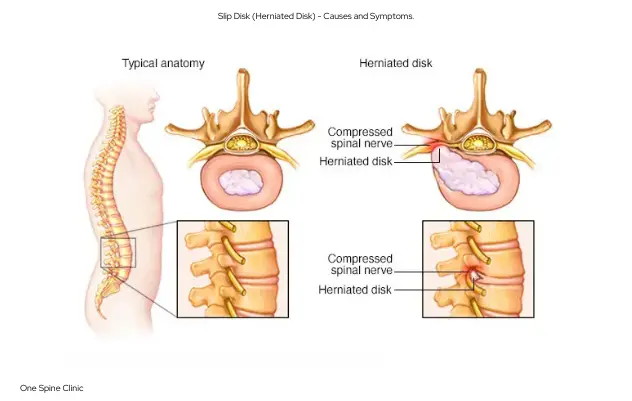Home Remedies for Neck Pain
how to relieve neck pain using home remedies Waking up with a stiff neck, feeling sore after a long day

A herniated disk is a condition that affects the rubbery cushions, known as disks, located between the vertebrae (the bones that make up the spine). Each spinal disk consists of a soft, jelly-like center called the nucleus, which is surrounded by a tougher, rubbery outer layer known as the annulus. A herniated disk occurs when a portion of the nucleus pushes through a tear in the annulus, leading to what is commonly referred to as a slipped disk or ruptured disk.
Herniated disks can occur anywhere along the spine but are most frequently found in the lower back. Depending on the location of the herniation, this condition can cause a variety of symptoms, including pain, numbness, or weakness in an arm or leg.
It’s important to note that many individuals with a herniated disk experience no symptoms at all. For those who do, symptoms often improve over time without the need for surgery. Non-surgical treatment options, such as physical therapy and pain management, are typically effective in alleviating discomfort and restoring function.
Most herniated disks occur in the lower back but can also develop in the neck. The symptoms experienced depend on the location of the herniated disk and whether it is pressing on nearby nerves. Typically, herniated disks affect one side of the body.
Individuals with herniated disks frequently experience numbness or tingling in the areas served by the affected nerves. This sensation can feel like pins and needles and may occur in the arms, hands, legs, or feet, depending on the location of the herniation. This can lead to decreased sensation in the affected areas, impacting daily activities.
Muscles that are innervated by the affected nerves may become weak. This weakness can lead to difficulties in performing everyday tasks, such as lifting objects or maintaining balance. You may find yourself stumbling or unable to hold items securely, which can be frustrating and concerning.
Herniated disks most commonly result from a gradual process known as disk degeneration, which is primarily age-related wear and tear. As individuals age, the spinal disks lose hydration and elasticity, making them less flexible and more susceptible to tearing or rupturing even from minor strains or twists.
While many people may not be able to pinpoint the exact cause of their herniated disk, certain activities and behaviors can contribute to its development. Lifting heavy objects improperly—such as using the back muscles instead of the stronger leg and thigh muscles—can place undue stress on the spine and lead to a herniated disk. Additionally, twisting or turning the body while lifting can further increase the risk of injury.
In some cases, a herniated disk can result from a traumatic event, such as a fall, an accident, or a direct blow to the back. However, these instances are relatively rare compared to the more common gradual degeneration process.
Several factors can increase the likelihood of developing a herniated disk. Understanding these risk factors can help individuals take preventive measures to protect their spinal health:
By recognizing and addressing these risk factors, individuals can take proactive steps to minimize their chances of developing a herniated disk and promote long-term spinal health.
Taking proactive steps can significantly reduce the risk of developing a herniated disk. Here are several effective strategies to help protect your spinal health:
By implementing these preventive measures, you can help safeguard your spine and reduce the likelihood of developing a herniated disk. Taking care of your body today can lead to a healthier and more active tomorrow.
Thanks For Read
how to relieve neck pain using home remedies Waking up with a stiff neck, feeling sore after a long day
How to Reduce Back Pain at Work? Do you experience back pain while working from home or in the office?
How to Manage Cervical Pain:5 Effective Methods for Lasting Relief 1. Cervical Pain: An Overview Cervical pain, or neck pain,
What is Spinal stenosis - Symptoms and causes & Treatment Spinal stenosis occurs when the space within the spine becomes
Spondylosis (Cervical) – Symptoms, Causes and Treatment Cervical spondylosis, often referred to as arthritis of the neck, describes the wear